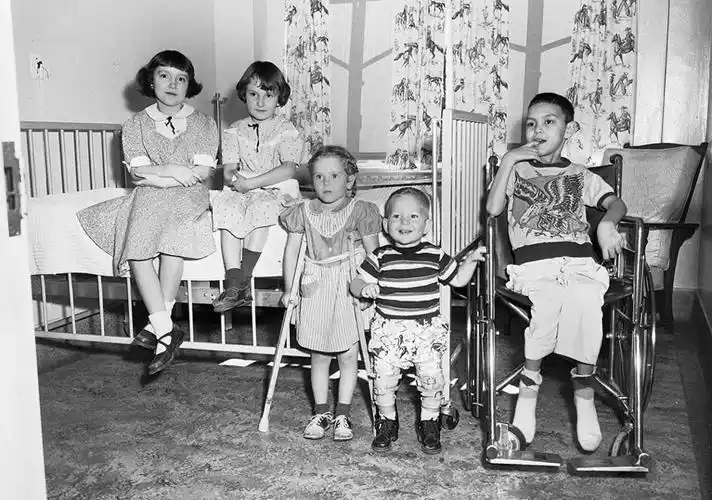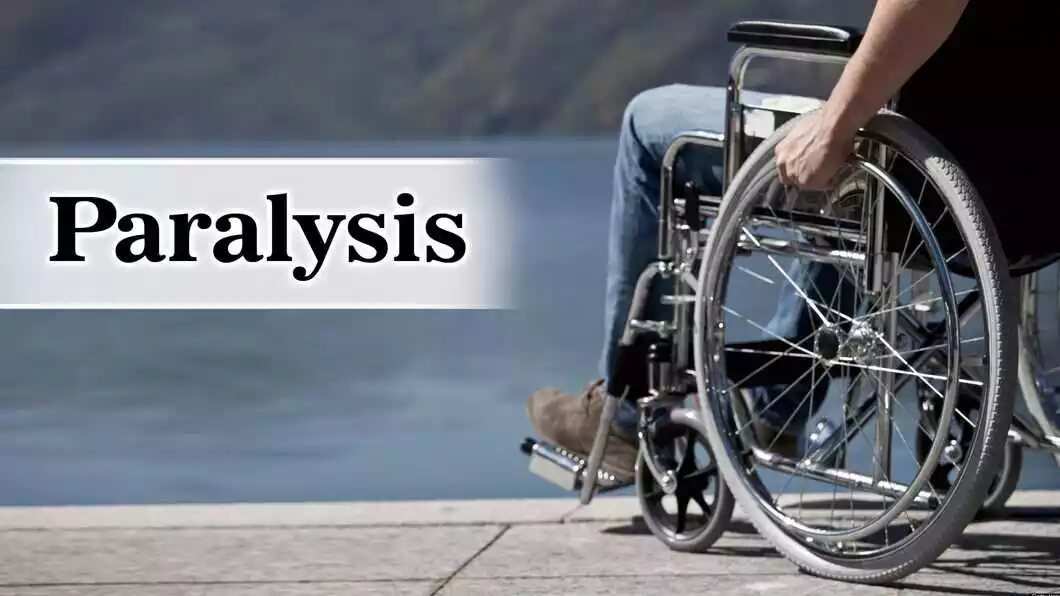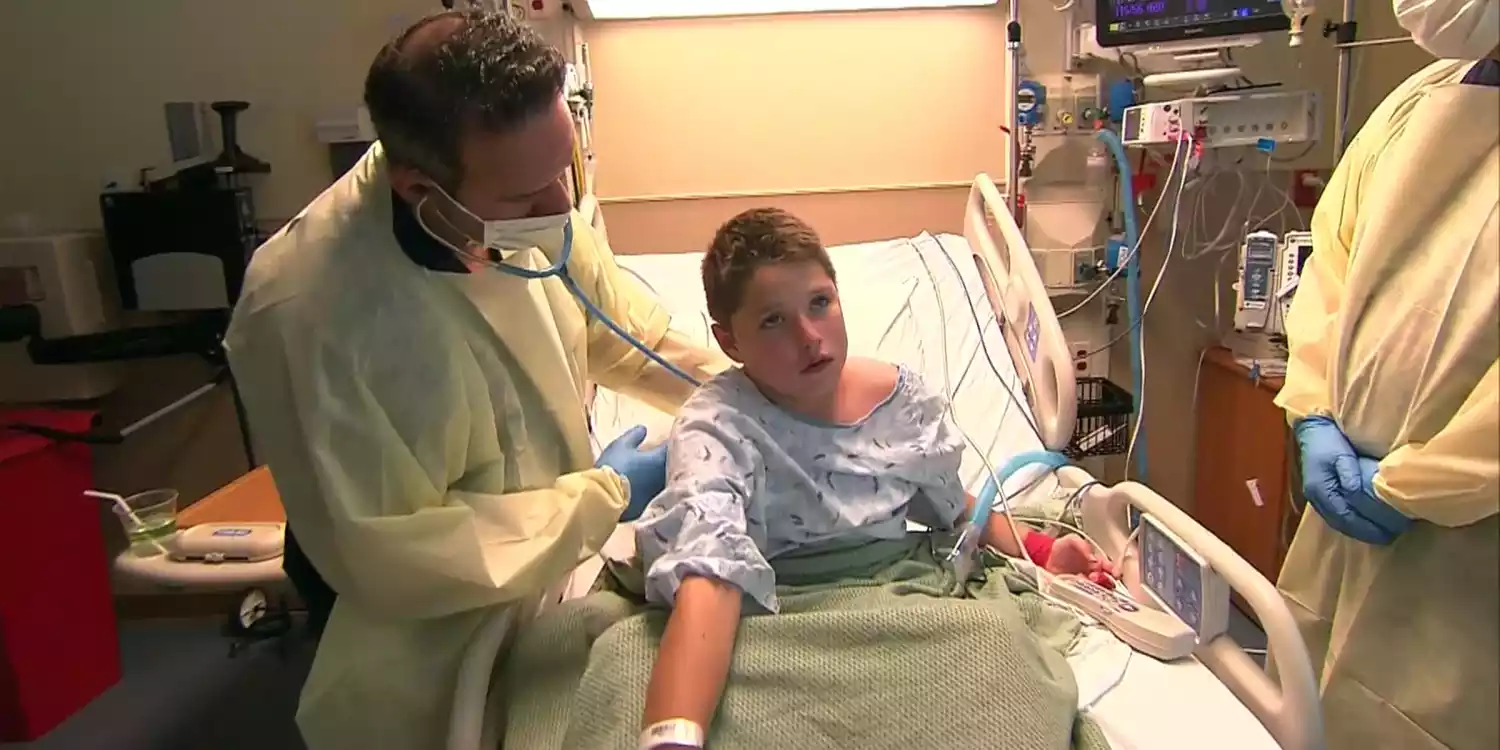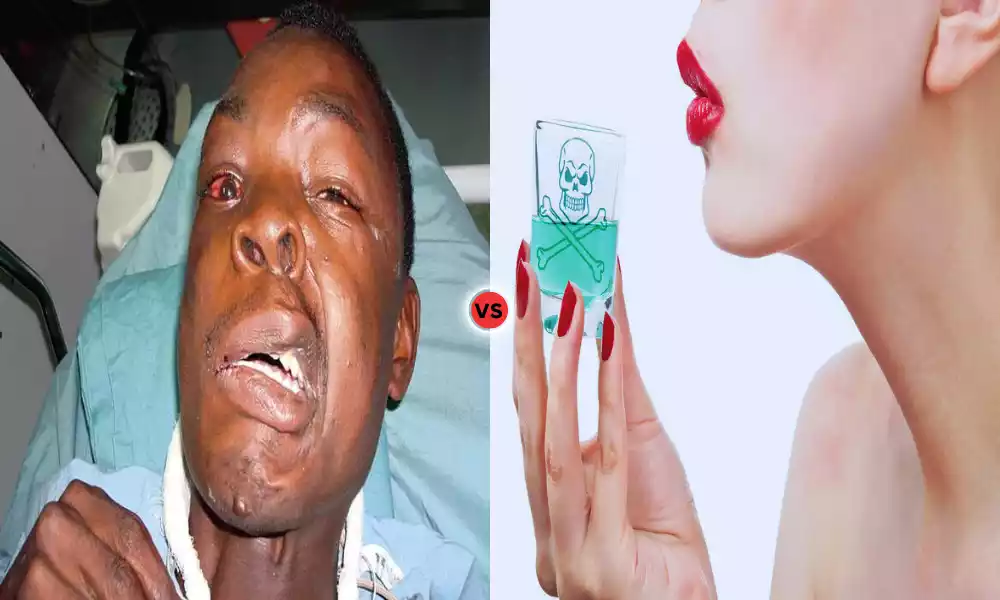Polio and Paralysis: Polio, or poliomyelitis, is a viral disease that has historically been a significant cause of paralysis and death worldwide. The infection primarily targets the nervous system, especially the motor neurons, leading to muscle weakness and paralysis. On the other hand, paralysis is a broader term, signifying the loss of muscle function in a part of the body.
While polio can be a cause of paralysis, many other conditions, such as strokes, spinal cord injuries, and certain diseases, can also lead to varying degrees of paralysis. Understanding the distinction between polio and paralysis is crucial for accurate diagnosis, effective treatment, and promoting awareness about these conditions.
What is Polio?
Polio, also known as poliomyelitis, is an infectious viral disease that primarily affects the nervous system. It is caused by the poliovirus and can result in symptoms ranging from mild flu-like symptoms to severe paralysis and even death. The virus primarily targets the motor neurons in the spinal cord, leading to muscle weakness and paralysis. While many infected individuals remain asymptomatic or exhibit minor symptoms, a small percentage can develop paralytic polio, which can be debilitating. Vaccination has played a crucial role in nearly eradicating the disease globally.

Causes of Polio
Polio is caused by the poliovirus. The primary modes of transmission for this virus are:
- Person-to-person contact: The poliovirus is highly contagious and spreads primarily through direct contact with an infected person.
- Fecal-oral route: The virus lives in the infected person’s throat and intestines. If the infected person doesn’t practice proper hygiene, the virus can be transmitted to others. For instance, an infected person might touch objects or food with unwashed hands, facilitating the virus’s spread.
- Contaminated water and food: Consuming food or water that has been contaminated with the feces of an infected person can lead to the transmission of the virus.
Once the virus enters the body, it multiplies in the throat and intestines, from where it can spread and invade the nervous system, potentially causing paralysis. It’s essential to emphasize that the best protection against polio is vaccination, which has significantly reduced the global incidence of the disease.
Symptoms of Polio
Polio infection can range from asymptomatic to severe, with varying symptoms. Here are the different manifestations of polio:
- Asymptomatic (Subclinical) Polio:
- Most people (about 70-90%) who get infected with the poliovirus will not show any visible symptoms.
- Minor (Abortive) Polio:
- Seen in a small percentage of cases.
- Symptoms resemble those of the flu and include:
- Fever
- Sore throat
- Fatigue
- Headache
- Vomiting
- Neck stiffness
- Pain or stiffness in the arms or legs
- These symptoms typically last for a short period and then disappear.
- Non-paralytic Polio (Aseptic Meningitis):
- A rarer form than minor polio.
- Symptoms include:
- Fever
- Fatigue
- Headache
- Vomiting
- Neck and back stiffness
- Muscle tenderness and spasms
- These symptoms usually last for a week or two.
- Paralytic Polio:
- The most severe form, affecting a smaller percentage of those infected.
- Begins similarly to non-paralytic polio, but soon leads to more severe symptoms, such as:
- Severe muscle pain and spasms
- Flaccid paralysis, often suddenly
- Depending on which part of the nervous system is affected, paralytic polio can be categorized into:
- Spinal Polio: Affects the spine; leads to asymmetrical paralysis, usually in the legs.
- Bulbar Polio: Affects the brainstem; can lead to difficulty breathing, swallowing, and speaking.
- Bulbospinal Polio: A combination of spinal and bulbar polio.
It’s worth noting that paralytic polio is rare, but when it occurs, it can be severe and can lead to permanent disability or even death.
What is Paralysis?
Paralysis is the loss or impairment of voluntary muscle function in a part of the body. It can result from a myriad of causes, including injury, disease, or conditions that damage the nervous system. Depending on its origin and extent, paralysis can be localized to a specific region or widespread, affecting larger portions of the body. It can also be temporary or permanent. Paralysis can manifest in various forms, such as flaccid (weakened muscle tone) or spastic (tightened muscle tone), and can affect movement, sensation, or both.

Causes of Paralysis
Paralysis can result from a multitude of causes affecting the nervous system or the muscles. Here are the main causes of paralysis:
- Stroke: An interruption of blood supply to a part of the brain can lead to cell death and damage, resulting in paralysis of the body parts controlled by that brain region.
- Spinal Cord Injury: Trauma or damage to the spinal cord can interrupt the communication between the brain and the muscles, leading to paralysis below the injury site.
- Traumatic Brain Injury (TBI): Severe head injuries can result in brain damage that affects motor function.
- Multiple Sclerosis (MS): An autoimmune disease where the body’s immune system attacks the protective covering of nerve fibers, leading to communication problems between the brain and the body.
- Amyotrophic Lateral Sclerosis (ALS or Lou Gehrig’s disease): A progressive neurodegenerative disease that affects nerve cells in the brain and spinal cord.
- Guillain-Barré Syndrome: A rare neurological disorder where the body’s immune system attacks the peripheral nerves.
- Peripheral Neuropathy: Damage to the peripheral nerves (nerves outside the brain and spinal cord) can result in weakness and numbness, often in the hands and feet.
- Myasthenia Gravis: An autoimmune disorder that affects the communication between nerves and muscles, leading to muscle weakness.
- Polio (Poliomyelitis): As discussed earlier, the poliovirus can lead to paralytic polio in some infected individuals.
- Botulism: A rare but serious condition caused by toxins produced by the bacterium Clostridium botulinum. It affects the nervous system and can lead to paralysis.
- Certain Poisons or Toxins: Some poisons, like those from certain snakes or spiders, can lead to paralysis.
- Congenital Conditions: Some people are born with conditions that lead to paralysis due to developmental issues in the womb.
- Tumors: Tumors that press against or damage the brain, spinal cord, or peripheral nerves can lead to paralysis.
It’s essential to understand that the type, severity, and duration of paralysis can vary depending on the cause. Some forms of paralysis may be temporary, while others can be permanent.
Symptoms of Paralysis
Paralysis refers to the loss of muscle function in a part of the body, which can manifest in various ways depending on its cause, location, and extent. Here are the primary symptoms and associated signs of paralysis:
- Loss of Voluntary Movement: The most definitive symptom is an inability to move a part or parts of the body, either partially or completely.
- Loss of Sensation: Affected areas might lose sensation or feeling. This can include not feeling pain, temperature, or touch.
- Muscle Stiffness (Spasticity): Paralyzed muscles can become stiff and harder to move. This is common in conditions like cerebral palsy or after a stroke.
- Muscle Weakness: Before complete paralysis sets in, there may be varying degrees of muscle weakness.
- Muscle Twitching or Spasms: Involuntary muscle contractions can occur.
- Tingling or Numbness: A “pins and needles” sensation might be felt in the affected area.
- Pain: Some forms of paralysis can be associated with pain, either due to the underlying cause or because of muscle atrophy and joint problems that develop over time.
- Change in Bowel or Bladder Function: Depending on the location of the paralysis, there may be urinary incontinence, retention, or loss of bowel control.
- Difficulty Breathing: In cases where paralysis affects the respiratory muscles, breathing might become difficult or even impossible without assistance.
- Altered Reflexes: Depending on the site and cause of paralysis, reflex responses might be heightened (hyperreflexia) or diminished (hyporeflexia).
- Atrophy: Over time, unused muscles can shrink and waste away.
- Pressure Sores: Immobility can lead to pressure sores or bedsores on parts of the body that remain in constant contact with a bed or chair.
It’s crucial to remember that not all these symptoms will be present in every case of paralysis. The exact symptoms a person experiences will depend on the cause and location of the paralysis, whether it’s localized (affecting only a specific part of the body) or generalized (affecting a larger area or even the entire body).
Comparison table of Polio and Paralysis
Here’s a comparison table that highlights the differences and similarities between Polio and Paralysis:
| Aspect | Polio | Paralysis |
|---|---|---|
| Definition | An infectious viral disease that affects the nervous system and can cause temporary or permanent paralysis. | Loss or impairment of voluntary muscle function in a part of the body. |
| Causes | Caused by the poliovirus. | Multiple causes: Stroke, spinal cord injury, traumatic brain injury, diseases like MS, polio, etc. |
| Symptoms | – Fever
– Fatigue – Vomiting – Neck stiffness – Pain in limbs – Severe muscle aches or weakness in paralytic polio |
– Loss of voluntary movement
– Loss of sensation – Muscle stiffness – Muscle weakness – Tingling or numbness |
| Affected Areas | Primarily affects motor neurons in the spinal cord leading to muscle weakness in the limbs. | Can affect any part of the body depending on the cause, from facial muscles to limbs to the entire body. |
| Duration | May be temporary or lead to permanent disability. | Can be temporary or permanent depending on the cause. |
| Diagnosis | Viral isolation, antibody testing. | Depends on the cause – MRI, CT scan, blood tests, etc. |
| Treatment | Supportive care, physical therapy. There’s no cure, but the disease is preventable with vaccination. | Varies based on cause – surgery, medications, physical therapy, assistive devices. |
| Prevention | Polio vaccine. | Varies depending on the cause. Some forms (like those resulting from injury) may be preventable with safety measures. |
This table gives a general overview, and it’s worth noting that the specifics within each category can be more detailed based on individual cases or more in-depth medical discussions.
What are the similarities between Polio and Paralysis?
While polio is a specific disease that can cause paralysis, and paralysis is a broad term denoting the loss of muscle function, they do share certain similarities:
- Loss of Muscle Function: Both polio and other causes of paralysis result in impaired or lost muscle function. Paralytic polio, as the name suggests, leads to paralysis of the affected muscles.
- Neurological Impact: Polio affects the nervous system, specifically the motor neurons in the spinal cord. Many causes of paralysis, such as strokes or spinal cord injuries, also directly impact the nervous system.
- Physical Manifestations: Both conditions can lead to observable physical signs such as muscle atrophy, weakness, and changes in reflexes.
- Need for Rehabilitation: Patients with polio or other forms of paralysis often require physical therapy and rehabilitation to regain strength, improve mobility, or adapt to their new physical limitations.
- Potential for Permanent Disability: Both polio and many causes of paralysis can result in permanent disabilities if the damage to the nervous system is severe and irreversible.
- Complications: Both conditions can lead to secondary health issues. For instance, immobility resulting from paralysis (whether due to polio or other causes) can lead to pressure sores, joint problems, and respiratory complications.
- Psychosocial Impact: The onset of paralytic polio or any form of paralysis can have significant psychological and social implications for the individual, including challenges related to self-esteem, social integration, and mental health.
While there are similarities, polio is just one of many potential causes of paralysis. Not everyone with paralysis has had polio, and not everyone with polio will develop paralysis.
Diagnosis and Treatment of Polio and Paralysis

Let’s delve into the diagnosis and treatment of both polio and paralysis:
Polio
Diagnosis of Polio:
- Clinical Assessment: Initial diagnosis is often based on clinical signs and symptoms, especially if there’s a known outbreak or if the person resides in or has traveled to an area with active polio transmission.
- Lab Testing: The definitive diagnosis requires laboratory testing:
- Viral Isolation: Poliovirus can be isolated from a patient’s feces or, less commonly, throat swabs.
- Serologic Testing: Measuring antibodies to poliovirus in the blood.
Treatment of Polio:
- Supportive Care: There is no cure for polio, so the treatment focuses on increasing comfort, managing symptoms, and preventing complications. This can include pain relievers, antipyretics (to reduce fever), and bed rest.
- Physical Therapy: To prevent deformities and loss of muscle function, physical therapy might be needed.
- Assistive Devices: In cases of severe paralysis, devices like braces, splints, or even wheelchairs might be necessary.
- Breathing Support: If the virus affects respiratory muscles, mechanical ventilation or the use of portable ventilators might be required.
Paralysis
Given that paralysis is a symptom and not a disease, its diagnosis and treatment vary widely based on its underlying cause. Here’s a general overview:
Diagnosis of Paralysis:
- Clinical Examination: Understanding the pattern of paralysis (e.g., localized vs. generalized, symmetric vs. asymmetric).
- Neurological Examination: To check reflexes, muscle strength, and areas of numbness.
- Imaging Studies: MRI or CT scans can be used to identify structural abnormalities in the brain or spinal cord.
- Electromyography (EMG) & Nerve Conduction Studies: To evaluate muscle activity and nerve function.
- Blood Tests: To identify potential causes like infections, toxins, or metabolic conditions.
Treatment of Paralaysis:
- Addressing the Underlying Cause: For example, surgery might be needed in the case of a spinal cord injury or tumor. Diseases like multiple sclerosis or Guillain-Barré syndrome have their specific treatments.
- Physical and Occupational Therapy: Helps patients regain function, adapt to their limitations, and prevent complications.
- Medications: Depending on the cause, medications can be prescribed to alleviate symptoms, manage pain, or treat the underlying condition.
- Assistive Devices: These can range from braces and splints to wheelchairs or devices that aid in communication.
- Surgery: Sometimes necessary to address certain causes of paralysis, such as relieving pressure on the spinal cord or implanting neural prostheses.
Both polio and many causes of paralysis require a multidisciplinary approach to treatment, often involving neurologists, physiatrists, physical therapists, occupational therapists, and other specialists.
Complications of Polio and Paralysis
Both polio and paralysis, irrespective of their cause, can lead to various complications:
Complications of Polio:
- Post-Polio Syndrome (PPS): A condition that affects polio survivors years after recovery. Symptoms include muscle weakness, fatigue, pain, and muscle atrophy.
- Muscle Atrophy: Unused muscles weaken and shrink over time.
- Joint Problems: Reduced mobility can lead to stiff joints and reduced range of motion.
- Breathing Difficulties: If polio affects the chest muscles or the brain’s respiratory center, it can lead to respiratory failure. In past outbreaks, patients sometimes needed to use “iron lungs” or other breathing apparatus.
- Swallowing Difficulties: Polio can sometimes interfere with the ability to swallow, leading to malnutrition or aspiration (where food or fluid enters the lungs).
- Pulmonary Edema: A condition where fluid accumulates in the lungs, which can be a secondary effect of respiratory muscle paralysis.
Complications of Paralysis (General):
- Pressure Sores (Bedsores): Immobility can lead to pressure sores on parts of the body that remain in constant contact with a bed or chair. These can become serious if not treated promptly.
- Muscle Atrophy: Similar to polio, any form of paralysis can lead to muscle atrophy due to disuse.
- Joint Contractures: Stiffness and reduced mobility can cause joints to become fixed in one position.
- Respiratory Complications: Paralysis affecting the chest muscles can lead to pneumonia or other respiratory infections.
- Urinary and Bowel Complications: This might include urinary tract infections, kidney stones, and constipation. There might also be urinary incontinence or retention.
- Deep Vein Thrombosis (DVT): Immobility increases the risk of blood clots in the deep veins, usually of the legs.
- Osteoporosis: Reduced mobility can lead to decreased bone density, making bones more fragile.
- Mental Health Issues: Living with paralysis can be challenging, leading to depression, anxiety, or other mental health disorders.
- Chronic Pain: Some people with paralysis experience ongoing pain or discomfort.
- Secondary Infections: Reduced mobility and a compromised immune system can make paralyzed individuals more susceptible to infections.
Managing these complications requires regular medical care, physiotherapy, and, in many cases, assistance with daily living activities. Early intervention and ongoing care can significantly reduce the risk or severity of these complications.
Social and Psychological Impact
Both polio and paralysis have profound social and psychological impacts on affected individuals. The degree of these impacts can vary depending on the severity of the condition, the individual’s support system, and other personal factors. Here’s an overview of the challenges and ramifications:
Social Impact:
- Stigmatization and Discrimination: Especially in areas where disability awareness and acceptance are low, individuals with paralysis can face social stigmatization and discrimination.
- Limited Accessibility: Many places may not be wheelchair-friendly or accessible to those with mobility challenges, leading to a sense of isolation or confinement.
- Dependency: Paralysis can render individuals dependent on caregivers for daily tasks, which can impact their sense of autonomy and freedom.
- Employment Challenges: Depending on the nature of their work, individuals may face unemployment or underemployment.
- Financial Strain: Medical treatments, physical therapy, and necessary assistive devices can be costly, leading to financial challenges. Loss of employment can further exacerbate this.
- Relationship Strain: Family roles might shift, and relationships can be strained due to the challenges of caregiving or adjusting to the new dynamics.
- Social Isolation: Reduced mobility and accessibility can limit social interactions, leading to feelings of loneliness.
Psychological Impact:
- Depression: Individuals may experience feelings of sadness, hopelessness, and loss of interest in activities they once enjoyed.
- Anxiety: Worries about the future, financial concerns, and health can cause heightened anxiety.
- Low Self-esteem: Individuals might feel less valuable or attractive due to their condition.
- Grief: There’s often a grieving process for the loss of physical capabilities and the life one had before the onset of paralysis.
- Identity Crisis: Coming to terms with a new self-image and redefining one’s identity can be challenging.
- Fear: Concerns about health, dependency, or the progression of the condition can be daunting.
- Feelings of Isolation: A sense that others can’t truly understand their experience can lead to feelings of isolation.
- Coping Challenges: Individuals might struggle to find effective coping mechanisms, sometimes turning to unhealthy habits such as substance abuse.
While these challenges are common, they don’t affect everyone uniformly. Some individuals exhibit remarkable resilience and adaptability. Psychological counseling, support groups, community engagement, and rehabilitation programs can help mitigate these social and psychological impacts. Moreover, a supportive network of family, friends, and caregivers plays a crucial role in helping individuals navigate these challenges.
Conclusion
Polio and paralysis, while interconnected, are distinct entities. Polio is a contagious viral illness, with a fraction of cases leading to paralysis, a loss of muscle function. Paralysis, on the other hand, can arise from a multitude of causes, not just polio. The repercussions of both conditions extend beyond the physical realm, deeply affecting the social and psychological well-being of affected individuals.
With medical advances, early intervention, and robust support systems, many individuals with polio or paralysis can lead fulfilling lives. The journey may be fraught with challenges, but resilience, community support, and modern therapeutic strategies offer hope and improved quality of life.































